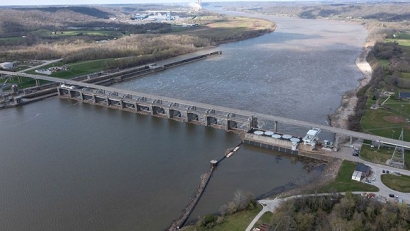
“The low-cost, carbon-free power generated at Markland Hydro Station is an important piece of our diversified portfolio of generation sources,” said Stan Pinegar, president of Duke Energy Indiana. “By embracing new advancements in technology and innovation, we’re able to expand clean energy production for our customers while also maintaining the reliable service they expect.”
Work on the project commenced in early 2017, following approval from the Indiana Utility Regulatory Commission. The project took four and a half years to complete and cost approximately $152 million – well within the company’s projected cost estimate. With the completion of these equipment upgrades, Markland Hydroelectric Station can now generate up to 65 megawatts of renewable, carbon-free energy, depending on the flow of the river, which is enough to power 52,000 homes. The facility’s annual energy output has increased by 39 gigawatt hours (GWh) per year.
The upgrades included replacing turbine runner hubs and runner blades with a more efficient design. The company also replaced a number of other parts and components, including discharge rings, wicket gates, generator rewinds, generator excitation controls and relay protection, station controls, intake and draft tube gates and the main power transformer. Crews also overhauled the high- and low-voltage electrical distribution systems at the station.
Situated along the Ohio River, Markland Hydroelectric Station began operations in 1967. It was the first nongovernmental hydroelectric station built on the Ohio River, and it played a vital role in the development of hydropower on the waterway.
The facility harnesses energy produced from the flow of the river to produce electricity, within guidelines governed by the Army Corps of Engineers. The force of the river’s current pushes against and turns the runner blades of each of the three large hydroelectric turbines housed inside a 150-foot-high concrete dam that spans the breadth of the river. Each turbine weighs approximately 180 tons, with each blade stretching 27 feet in length. The movement of the turbines spins a generator shaft that, in turn, produces electric power.
Upgrades like those at Markland Hydro Station are a key piece of Duke Energy’s transition to a cleaner energy future. Since 2005, Duke Energy has decreased sulfur dioxide emissions in Indiana by 96%, nitrogen oxide emissions by 73% and carbon emissions by 42%. During the next 20 years, the company plans to add about 4,525 megawatts of solar power, 400 megawatts of energy storage and 2,800 megawatts of wind energy, in addition to cleaner natural gas generation.

